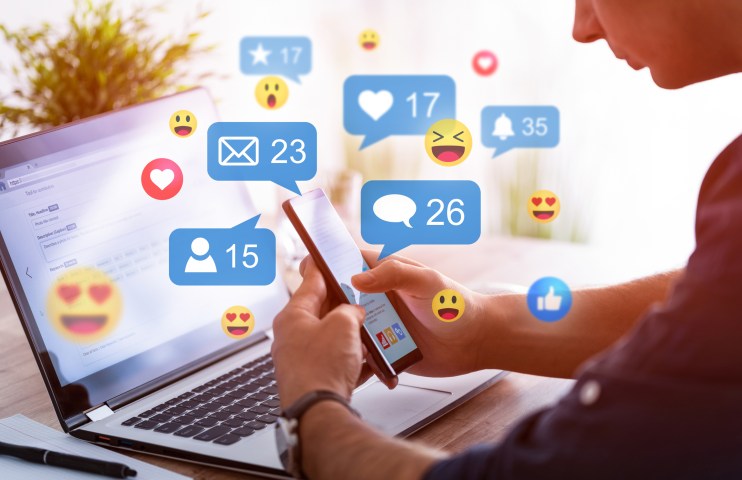Communication and conversation are not the same

How many outcomes in your life may have been affected by poor communication skills? Could you have gotten a job you really wanted? Saved a relationship? What about that political conversation that got out of hand at a dinner party? So often we forget that communication and conversation are not the same thing. Celeste Headlee shares what she’s learned about how to have effective, meaningful and respectful conversations.
A few years ago, my son was going through a tough time at school. He was being bullied, and he began to dread going to school each morning. He became reluctant to participate in class and stopped doing homework. His teacher e-mailed me to let me know that his academic performance was suffering.
In the ensuing weeks, she and I exchanged a number of e-mails. I knew that this woman had my son’s best interests at heart and I’m sure that, on some level, she knew the same about me. But we just weren’t connecting. She was having trouble getting my son to do his work and probably thought I was making excuses for him. I felt like the one person I needed to help him couldn’t see the full picture. And in the meantime, my son suffered.
Finally, I called the principal and asked to meet with him and the teacher. I’ll admit it probably wasn’t the best solution, because including her boss added pressure to the situation. The meeting started badly and quickly began to devolve into an argument. I knew that if we were going to help my son, I needed to appeal to this woman on an emotional level.
So, I consciously turned my body toward her so that her boss wasn’t in my sight line. I reached out and touched her left hand on the table and I said, “I’m really sorry if I’m sometimes difficult to communicate with. I’m so concerned for my son. He only gets one chance at fourth grade. I apologise if anything I’ve said has come off as angry. I just want him to have a good year in school and I can’t bear to see him in so much pain.”
I saw her face soften. I watched the hard lines beside her mouth relax and disappear, something I could never have seen in an e-mail. And she said, “Don’t worry, Celeste. I’m pulling for him. I’m on his side all the way and I’ll do everything I can to make sure he’s successful. And you know what? He’s a great kid. I really love him.”
From that moment forward, this teacher became my son’s strongest advocate. Like any other parent, I have had many, many conversations with my kid’s teachers over the years, but that one stands out because the effects were so dramatic. We had been communicating for weeks from behind screens, but we hadn’t connected as human beings.
I can’t speak for what was inside her mind during that time, but I can say that I had started to think of her as a job title and not a person. She was my son’s teacher, not a young woman who worked sixteen-hour days to handle a crowded class of kids. For too long, I saw her not as an idealist paying off student loans for an education degree that had earned her a relatively low-wage job working with children, but just as an obstacle to my kid’s success. All it took was one conversation for us to fully see each other.
Technology and conversation
There’s a strong indication that the rise of technology, social media and texting has led to a decrease in a few critical components of effective communication. One of those components is empathy. In 2010, a team at the University of Michigan cimpiled the results of seventy-two studies conducted over thirty years. They found a 40 percent decline in empathy among college students, with the vast majority of that decline taking place after 2000. “The ease of having ‘friends’ online might make people more likely to just tune out when they don’t feel like responding to others’ problems,” noted an author of the study, “a behaviour that could carry over offline.”
I find this development to be extremely worrisome. Empathy, at its most basic, is the ability to sense someone else’s feelings, to be aware of their emotional state, and to imagine their experience. Not just to recognise that a co-worker is sad, but to imagine what he or she may be going through and what it would feel like if you were going through the same thing.
To experience empathy, we must establish a connection between our idea of ourselves and of another person. We have to ask questions like, “Would I like it if that happened to me?” Or, in my case, “How must it feel to be responsible for twenty-five fourth-grade students every day?”
Empathy is a critical human ability and an essential element of meaningful communication. But the ways in which we communicate today offer few opportunities for empathic connection. One recent study of our social media use suggested that nearly half of online friendships are non-reciprocal. That is, half of the people you identify as your “friends” online do not feel the same way about you. One participant in the study supplied a list of people they could call in an emergency, and when the researcher contacted them, only half said they’d actually be inclined to help.
Meaningful connection requires an investment of time. Conversations are uniquely human and, like us, they are complicated and sometimes chaotic and often rambling. That’s why another essential ingredient for good conversation is attention.
Computers can relay information in milliseconds, but human beings cannot and should not attempt to mimic this efficiency. Most of the time, it’s the tangents and offhand remarks that reveal the most about someone. It may take five minutes for your friend to relay a simple story about a trip to the grocery stores, but it’s the pauses and the smiles and the bursts of laughter that make the story memorable. If you can’t pay attention long enough to listen to the whole thing, you’ll miss all of that.
And a lot of us do miss those details since today, the average human attention spans is about eight seconds – on par with that of a goldfish. Even at work, our ability to focus on any one task for long is diminished. The average worker is interrupted every three minutes by e-mails, phone calls, texts and social media.
Don’t get me wrong; I’m not anti-tech. I own a tablet and a smartphone and a laptop and an e-reader. I have a Samsung watch that lets me speak into it or e-mail my son from my wrist. If he doesn’t check his e-mail fast enough, I can send that same message to his phone or tablet with a few swipes of my finger.
Convenience versus compassion
Technology-enabled communication can be a wonderful thing, and it’s true that initiating conversation is messier and riskier than firing off an e-mail or a text. But the mess is often the best part. Think of a young man’s stumbling declaration of love or a little girl’s breathless description of her first day at school. These nuances are lost on a screen. While typing up our thoughts and editing them carefully grant us some measure of control, I don’t think we get the best end of the deal. We may gain convenience, but we often lose the most powerful part of the message we transmit: the emotion behind it.
While I was writing this book, I used a planner (so analog!) to keep a running tally of my face-to-face conversations each day. Before this exercise, I estimated that I probably had three or four substantive conversations a day. But after tracking them carefully, it turned out that most days I was having perhaps one or two, sometimes none. It felt like more because I was communicating with people all day. But I was rarely talking with them.
I’m not a scientist, but I can use scientific methods to observe how my relationships, and the conversation I have, are impacted by technology. We can all do this field research by tracking how often we converse face-to-face as opposed to text or e-mail. And we can be more aware, while we’re chatting in line at the grocery store or across from each other at the lunch table, of our ability to empathise and develop a true connection.
It’s a truism that you learn more about yourself in practice than in theory, and that means once you’ve finished reading this book, you must go out and converse. You can’t learn to ride a bike by reading about it. Biking is active and requires practice. The same is true of conversation. Thinking about it is not enough.
This passage was adapted from We Need to Talk. Celeste Headlee is the host of the daily news show On Second Thought on Georgia Public Broadcasting. She has spent more than a decade with National Public Radio and has been a host of Public Radio International since 2008. Celeste has appeared on CNN, the BBC, PBS and MSNBC. She’s also a classically trained soprano who doesn’t get enough time to sing anymore. She has one son and a one rescue dog, and lives in Atlanta, GA.







